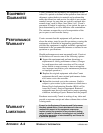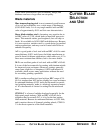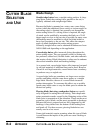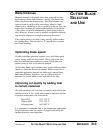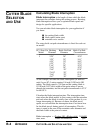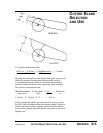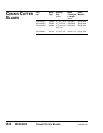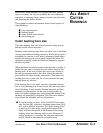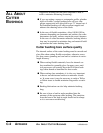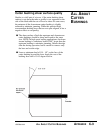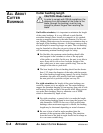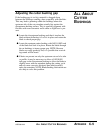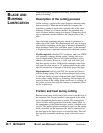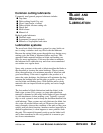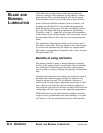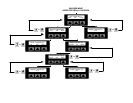
Supportive bushings become more important if heat is
used to minimize whitening (fracturing).
● If you are cutting a square or rectangular profile, whether
rigid or flexible, a round bushing bore will not offer
proper support and will often lead to an "S" shaped cut. A
flat bottomed bushing will offer excellent support and
enhance the shearing action of the blade.
● In the case of flexible extrudates, allow 0.010-0.050 in.
clearance depending on durometer and surface; the softer
durometers and tacky surfaces require the most clearance.
In the case of softer durometer materials, bushing lubrica-
tion may be required to minimize drag and material build-
up between the cutter bushing faces.
Cutter bushing bore surface quality
The internal surface of the cutter bushing must be smooth and
glass-like when cutting flexible extrudates, otherwise exces-
sive drag causes jamming and can lead to variations in cut-to-
length accuracy.
● When cutting flexible materials, have the internal sur-
face machined to resemble glass. In many cases, med-
ical processors will actually have the ID of their bush-
ings either honed or burnished for best results.
● When cutting clear extrudates, it is also very important
to have a smooth internal surface to minimize scratch-
es. In some cases it may be necessary to make a Teflon
or Delrin insert to further minimize drag and/or scratch-
ing.
● Bushing lubrication can also help minimize bushing
drag.
● Be sure to have a lead-in angle machined into the
entrance of the upstream cutter bushing. The transition
from the bore to the lead-in angle should not be abrupt
as it to can cause variable drag.
ALL ABOUT CUTTER BUSHINGS UGE059/1003
C-2 APPENDIX
ALL ABOUT
CUTTER
BUSHINGS



